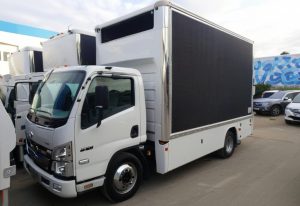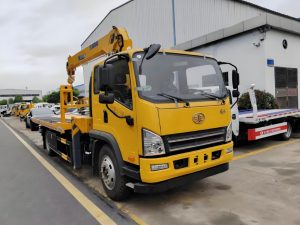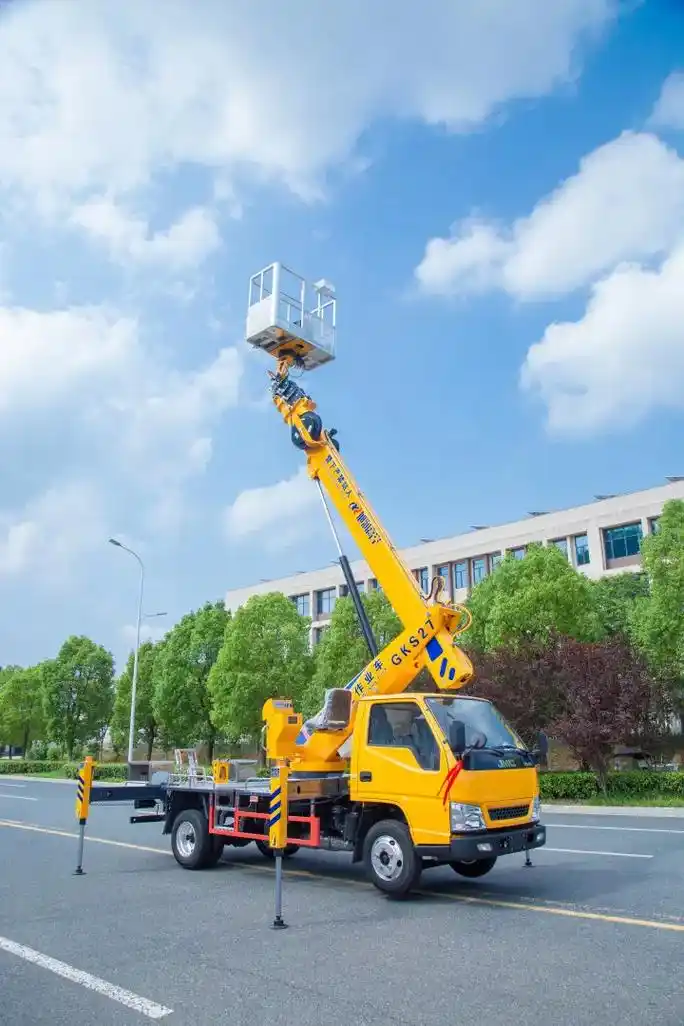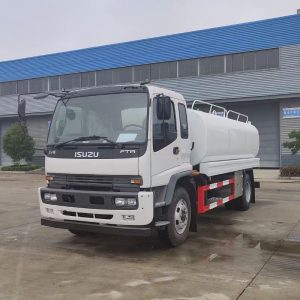Table of Contents
Toggle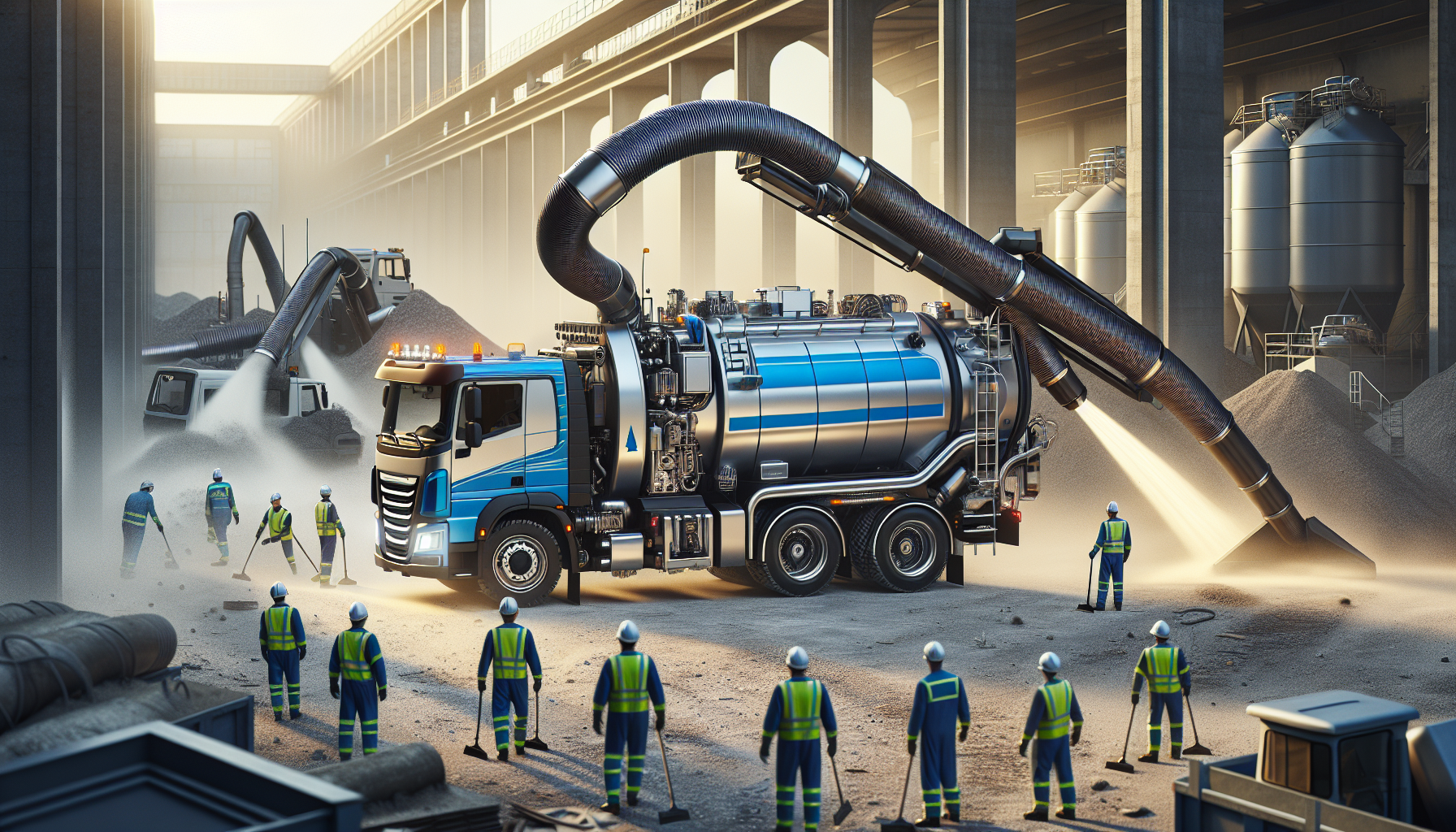
Choosing the right vacuum truck can be a game-changer for businesses in various industries. These powerful machines have a significant impact on efficiency and productivity, making them essential for tasks like waste removal, excavation, and industrial cleaning. With so many options available, finding the perfect vacuum truck to meet specific needs can be a challenging process.
This guide aims to help readers navigate the complexities of selecting the best vacuum truck for their requirements. It covers key aspects to consider, including understanding the basics of vacuum trucks, assessing specific needs, evaluating important features, comparing different brands, and taking into account budget constraints and safety regulations. By exploring these crucial factors, readers will be better equipped to make an informed decision when investing in a vacuum truck that aligns with their operational demands.
Understanding Vacuum Truck Basics
What is a Vacuum Truck?
Vacuum trucks are specialized vehicles designed to handle a wide range of industrial and environmental tasks. These versatile machines operate on a principle similar to household vacuum cleaners but on a much larger scale. They are equipped with powerful suction capabilities, allowing them to collect and transport various materials, including liquids, sludges, and dry solids.
These trucks play a crucial role in numerous industries, such as oil and gas, manufacturing, and environmental services. They are often referred to by different names, including vacuum tankers, vactor trucks, or vac-con trucks. Their primary function is to enable the safe and efficient transport of materials from one location to another, typically for treatment or disposal purposes.
How Vacuum Trucks Work
The operation of a vacuum truck revolves around the creation of a powerful vacuum within its storage tank. This process begins with the truck’s engine, which powers a vacuum pump. The pump rapidly removes air from the tank, generating a low-pressure area or vacuum. Depending on the model, vacuum trucks utilize either rotary vane pumps or positive displacement pumps to achieve this effect.
Once the vacuum is established, the truck’s intake valve opens, allowing external atmospheric pressure to push waste materials through the suction hose into the tank. This seamless process enables the safe and effective transport of various substances. Operators can finely tune the intake and discharge valves to manage the pressure differential, ensuring a smooth flow of materials into and out of the tank.
The suction hoses used in vacuum trucks typically range from 2 to 4 inches in diameter, with 3 inches being the most common size. The length of these hoses can extend up to 50 meters, depending on factors such as lift requirements and pressure losses.
Types of Vacuum Trucks
Vacuum trucks come in several types, each designed to handle specific tasks and materials:
- Industrial Vacuum Trucks: These versatile machines are built to tackle tough jobs, including industrial waste removal, environmental cleanups, and bulk material recovery. They can handle both wet and dry materials, making them suitable for various industrial applications.
- Hydro Excavators: These trucks combine high-pressure water jetting with powerful vacuuming capabilities. They use pressurized water to break up soil, which is then vacuumed into a debris tank. This method is particularly safe for digging around utilities and pipelines.
- Combination Units: These trucks integrate high-pressure water jetting and powerful vacuuming capabilities in a single unit. They are highly efficient for tasks such as sewer cleaning and hydro excavation.
- Liquid Vacuum Trucks: Specialized for transporting liquid waste, including hazardous materials, these trucks are essential for industries such as chemical plants, refineries, and wastewater treatment facilities.
- Liquid Ring Vacuum Trucks: Designed for jobs requiring a high vacuum with minimal maintenance, these trucks use a liquid ring pump, which is quieter and more efficient than traditional vacuum pumps.
- Dry Vacuum Trucks: These trucks focus on collecting dry materials such as dirt, small rocks, asphalt pieces, and leaves. They are commonly used in street cleaning operations and are effective at cleaning debris from curbs and ditches.
Each type of vacuum truck offers unique advantages, allowing operators to choose the most suitable option for their specific needs. The versatility and efficiency of these machines make them indispensable tools in maintaining cleanliness, safety, and environmental compliance across various industries.
Assessing Your Specific Needs
When selecting the best vacuum truck for a particular operation, it is crucial to carefully assess specific needs. This assessment involves considering various factors that influence the efficiency, safety, and compliance of vacuum truck operations.
Industry Requirements
Different industries have unique requirements for vacuum truck operations. For instance, in the waste management sector, vacuum trucks play a vital role in handling and disposing of various types of waste materials. Operators must be aware of the specific regulations governing different types of waste and follow the required procedures for containment and disposal.
In the construction industry, vacuum trucks are often used for excavation and debris clearing. Construction companies need to comply with OSHA vacuum truck requirements, which include ensuring proper grounding and bonding of the trucks before use on job sites. Additionally, construction workers using vacuum trucks must wear appropriate personal protective equipment (PPE).
For industries dealing with hazardous materials, such as chemical plants or refineries, special considerations are necessary. Vacuum trucks used for collecting and transferring hazardous materials should only be employed after evaluating the relative risk, feasibility, and availability of alternative technologies. In some cases, using a positive displacement pump instead of the truck’s vacuum pump may be a more suitable option.
Job Site Conditions
The specific conditions of the job site significantly impact the choice of vacuum truck. Operators must consider factors such as:
- Material characteristics: The type of material to be handled affects the choice of vacuum truck. For instance, materials with a pH of 2.5 or less require stainless-steel trucks or similar equipment designed for low pH liquids. Compatible hoses and fittings are also essential.
- Temperature limitations: Most vacuum trucks have a temperature limit of 120°F (50°C) for the materials they handle. Higher temperatures require specialized equipment and verification of disposal site compatibility.
- Vapor pressure: No vacuum truck should handle materials with a True Vapor Pressure (TVP) greater than 11 psia (76 kPa).
- Safety considerations: Pyrophoric or oxidizing materials require additional steps to mitigate hazards before handling. Combustible solids, such as sulfur dust, should not be handled with any type of vacuum truck.
- Environmental factors: Job sites may have specific environmental concerns that need to be addressed, such as the potential for spills or the presence of hazardous materials in the surrounding area.
Frequency of Use
The frequency of vacuum truck use is another crucial factor to consider when assessing specific needs. For operations that require regular use of vacuum trucks, investing in a more durable and versatile model may be beneficial. This approach can help ensure consistent performance and reduce maintenance costs over time.
Frequent use also necessitates a more rigorous maintenance schedule. Operators should conduct daily walk-around inspections to check for any issues or irregularities with the vacuum trucks. These inspections should include:
- Checking for fluid leaks around the parked truck
- Verifying fluid and battery levels
- Inspecting tire condition and inflation level
- Testing horns, lights, and safety features like backup alarms and seatbelts
By carefully assessing industry requirements, job site conditions, and frequency of use, operators can make informed decisions when choosing the most suitable vacuum truck for their specific needs. This thorough evaluation process helps ensure optimal performance, safety, and compliance across various applications and industries.
Key Features to Consider
When selecting the best vacuum truck for specific needs, operators must carefully evaluate several key features to ensure optimal performance and efficiency. These features play a crucial role in determining the truck’s suitability for various applications and job site conditions.
Tank Capacity
The tank capacity of a vacuum truck has a significant impact on its operational efficiency. When choosing the appropriate tank size, operators should consider factors such as:
- Average septic tank size in the service area
- Route density and proximity to dump sites
- Local Department of Transportation (DOT) requirements
- Commercial Driver’s License (CDL) requirements
- Gross Vehicle Weight (GVW) of the chassis
For instance, if the typical septic tank size in an area is 1,000 gallons, a 3,600-gallon vacuum truck would allow for pumping three septic tanks before needing to dump. However, if 1,500-gallon tanks are more common, a 5,000-gallon septic truck would be more suitable for the same number of tanks.
The relationship between tank capacity and chassis type is also crucial:
| Chassis Type | Approximate Tank Capacity |
|---|---|
| Small F550, RAM, or Isuzu | Up to 1,000 gallons |
| Under 26,000 GVW | Up to 1,700 gallons |
| 33,000 GVW | Around 2,500 gallons |
| Tandem axle chassis | Larger capacities |
It’s important to note that vacuum trucks with capacities over 1,600 gallons typically exceed the 26,000 GVW CDL requirement, necessitating additional endorsements such as tanker and possibly air brake certifications.
Pump Power
The pump power of a vacuum truck determines its suction capabilities and overall performance. While specific pump power details were not provided in the factual keypoints, it’s essential to consider the following aspects when evaluating pump power:
- Vacuum rating: Most vacuum trucks operate with a vacuum rating of around 29 inches of mercury (Hg).
- Material characteristics: The type and density of materials to be handled influence the required pump power.
- Temperature limitations: Standard vacuum trucks typically have a temperature limit of 120°F (50°C) for handled materials.
- Vapor pressure: Vacuum trucks should not handle materials with a True Vapor Pressure (TVP) greater than 11 psia (76 kPa).
Suction Hose Specifications
The suction hose is a critical component of any vacuum truck, and its specifications can greatly affect the truck’s performance and versatility. Key considerations for suction hoses include:
- Hose diameter: Common sizes range from 2 inches to 8 inches, with larger diameters allowing for increased flow rates.
- Hose construction: Heavy-duty corrugated vacuum hoses are designed for full vacuum applications, typically featuring:
- Tube thickness: 3/16 inch or 1/4 inch
- Material options: Tan or red pure gum, or black high abrasion/static conductive
- Reinforcement: High tensile textile cords and flexible steel helix wires
- Cover: Black, corrugated for maximum flexibility
- Temperature range: Most suction hoses operate between -40°F to +160°F.
- Vacuum rating: Hoses should match the truck’s vacuum rating, typically around 29 inches of mercury (Hg).
- Length: Standard lengths are often 50 feet, but custom lengths are available to suit specific needs.
Some vacuum trucks may also feature specialized hoses, such as boom hoses with soft cuffs for easy installation or connector hoses to reduce noise and vibration between piping components.
By carefully considering these key features – tank capacity, pump power, and suction hose specifications – operators can select a vacuum truck that best meets their specific needs and job requirements. This thoughtful evaluation ensures optimal performance, efficiency, and safety across various applications and industries.
Evaluating Truck Chassis Options
When selecting a vacuum truck, evaluating the chassis options is crucial for ensuring optimal performance and efficiency. The choice of chassis has a significant impact on the truck’s capabilities, maneuverability, and overall suitability for specific job requirements.
Weight Capacity
The weight capacity of the truck chassis plays a vital role in determining the tank size and overall functionality of the vacuum truck. Different chassis types offer varying weight capacities, which directly affect the amount of material that can be transported. For instance:
- Small F550, RAM, or Isuzu chassis can accommodate tanks up to 1,000 gallons.
- Chassis under 26,000 GVW (Gross Vehicle Weight) can support tanks up to 1,700 gallons.
- A 33,000 GVW chassis can handle tanks around 2,500 gallons.
- Tandem axle chassis are suitable for larger capacities.
It’s important to note that vacuum trucks with capacities over 1,600 gallons typically exceed the 26,000 GVW CDL requirement. This means operators may need additional endorsements, such as tanker and possibly air brake certifications.
When considering weight capacity, operators should also take into account the type of materials they’ll be handling. For example, gas-powered vacuum trucks generally weigh less than diesel units, which can be advantageous when hauling a tank of slurry. Even a few hundred pounds can make a significant difference in overall performance and fuel efficiency.
Maneuverability
The maneuverability of a vacuum truck is crucial for accessing various job sites and navigating through challenging terrains. When evaluating chassis options, consider the following factors:
- Turning radius: A smaller turning radius allows for better navigation in tight spaces, particularly in urban environments or industrial facilities with limited access.
- Off-road capabilities: If the work involves accessing remote or rugged areas, choose a chassis with suitable off-road capabilities.
- Size and compactness: Compact and agile trucks are ideal for urban environments or industrial facilities with limited space. Consider the overall dimensions of the truck to ensure it can access confined areas where waste removal is necessary.
- Boom height and rotation: Look for features like adjustable boom height and rotation capabilities, which enhance the truck’s versatility and ease of use in various job sites.
- Flexible hose options: Some vacuum trucks offer the ability to work up to 300 feet off the truck, providing greater flexibility in accessing hard-to-reach areas.
Fuel Efficiency
Fuel efficiency is an increasingly important factor when evaluating truck chassis options. The choice between gas and diesel engines can have a significant impact on both performance and operating costs.
Gas-powered vacuum trucks often have an advantage in terms of fuel efficiency, especially for smaller units. For example, McLaughlin’s ECO Series of truck-mounted vacuum excavators is designed to maximize fuel economy while still delivering on performance. These units offer options including 49, 85, or 99 hp auxiliary engines with tank capacities ranging from 500 to 1,200 gallons.
The ECO 50 model, equipped with a 49 hp engine, features a 1,025 cfm blower and 5.6 gpm water pump. This configuration allows for efficient operation with a 4-inch hose at 1,000 cfm, requiring as little as 44 or 45 hp to run the vacuum and water pump effectively.
However, it’s worth noting that diesel models may hold their value better than gas-powered units, which can be advantageous for contractors who frequently upgrade their fleet. Additionally, diesel engines still dominate in larger vacuum excavator sizes, particularly those with hose sizes larger than 4 inches.
When evaluating fuel efficiency, consider the specific requirements of your jobs and the long-term costs associated with each engine type. Factors such as fuel availability, maintenance costs, and resale value should all be taken into account when making a decision.
Comparing Different Brands
Top Vacuum Truck Manufacturers
When it comes to vacuum trucks, several manufacturers stand out in the industry. Vactor Manufacturing, with over 50 years of experience, has established itself as a leader in providing innovative solutions for municipal and industrial customers. Their products are known for reliability, durability, and advanced technology, making them essential for sewer cleaning, wastewater management, and excavation tasks.
Guzzler Manufacturing specializes in high-capacity, heavy-duty vacuum trucks widely used across various industries. Their reputation for quality and durability makes them a preferred choice for demanding tasks that require robust equipment. GapVax, another respected name, focuses on advanced vacuum trucks and sewer cleaners, known for innovative approaches and quality craftsmanship.
Keith Huber Corporation and Super Products LLC are also distinguished players in the industry, offering comprehensive ranges of vacuum trucks and mobile vacuum systems. These companies have established themselves as trusted names for businesses requiring reliable and efficient waste management solutions.
Popular Models
Several popular models have gained recognition in the vacuum truck market. Vac-Con’s lineup includes the Single Engine Combination Machine and Dual Engine Combination Machine. The Single Engine model uses a hydrostatic drive to power both vacuum and water systems with a single engine, allowing independent operation for multiple applications. The Dual Engine design offers flexibility and efficiency for tackling tough jobs.
Vac-Con also offers the X-Cavator and XX-Cavator, sophisticated hydro excavators equipped with high-quality pumps, blowers, and control systems. The X-Cavator specializes in safely excavating around in-ground utilities, while the XX-Cavator is designed for extreme climate and temperature conditions.
Another notable model is the Chevy 6500 1200 Gallon Vacuum Truck, described as a true workhorse. This 2023 model features a 1200-gallon portable restroom tank and a PTO-driven Masport HXL-4 vacuum pump, offering power and versatility for various jobs.
Customer Reviews
Customer experiences provide valuable insights into the performance of different vacuum truck brands. One user reported that Cowboy Pumps work well but tend to be noisy. They also had positive experiences with National Vacuum Equipment’s Challenger pumps.
From an oilfield perspective, a user ranked their preferences as follows:
- NVE Challenger 607: Described as a “BEAST pump,” it can load 4500 gallons through a 4″ hose in 7-10 minutes when run at 1100rpm. It’s also more cost-effective than most brands except Jurop, though it uses more oil.
- Masport HLX400: Nearly matches the Challenger’s performance and is slightly quieter.
- Fruitland: Louder than the previous two and less dependable, with a tendency for oil leaks.
The user expressed less preference for Jurop pumps, citing issues with noise, seal/o-ring quality, and overall performance compared to NVE, Masport, or Fruitland pumps.
When considering vacuum trucks, it’s crucial to evaluate factors such as pump performance, noise levels, maintenance requirements, and overall reliability. Each brand and model offers unique features and capabilities, so choosing the right one depends on specific job requirements and operating conditions.
Budget Considerations
When considering the acquisition of a vacuum truck, operators must carefully evaluate various financial aspects to make an informed decision. This section explores the key budget considerations, including the choice between purchasing and renting, operating costs, and maintenance expenses.
Purchase vs. Rental
The decision to purchase or rent a vacuum truck depends on several factors, including the company’s financial situation and long-term needs. Buying a new vacuum truck offers 24/7 access to the equipment, 365 days a year, which can be advantageous for companies with consistent usage requirements. However, this option requires a significant upfront investment and long-term commitment.
Renting, on the other hand, provides flexibility and freedom from long-term obligations. It can be an attractive option for companies that only require vacuum trucks occasionally or for short-term projects. Rental agreements often include maintenance and repair services, reducing the burden on the company.
A third option to consider is purchasing a used vacuum truck. This approach offers several benefits:
- Lower cost compared to new trucks
- Exemption from federal excise tax
- Potential for remaining OEM warranties
- Excellent condition when purchased from reputable dealers
Operating Costs
Operating costs play a crucial role in determining the overall budget for vacuum truck usage. These costs include fuel consumption, labor, and disposal fees. To estimate operating expenses, contractors should consider the following factors:
- Number and depth of holes to be excavated
- Proximity to water sources and disposal sites
- Soil conditions and water-to-soil ratio
- Transportation costs to disposal sites
For example, a typical pothole may require approximately 4 cubic feet of material removal, with a 1:1 ratio of water to soil. Contractors should calculate the distance to disposal sites, research dump costs, and study DOT weight regulations during the bidding process.
Maintenance Expenses
Regular maintenance is essential for ensuring the longevity and efficiency of vacuum trucks. Maintenance expenses can vary depending on the type of truck and usage patterns. Here are some key maintenance considerations:
- Monthly maintenance tasks:
- Check fluid levels
- Inspect air breather
- Clean debris body
- Examine air and water separator cyclone unit
- Inspect electrical wiring
- Annual maintenance tasks:
- Change hydraulic filters
- Flush hydraulic system
- Change fluids
- Clean out body and apply new primer coat (especially important for winter storage)
When comparing maintenance costs between owned and rented trucks, it’s important to note that rental companies typically handle routine maintenance as part of the agreement. This can be advantageous for smaller operations that may not have the time or expertise to manage equipment maintenance effectively.
To illustrate the potential impact of maintenance and downtime on overall costs, consider the following example:
| Cost Factor | Amount |
|---|---|
| Daily revenue loss | $3,000 |
| Annual downtime (8%) | 20 days |
| Annual cost of downtime | $60,000 |
| 5-year leasing cost impact | $300,000 |
This example demonstrates the significant financial implications of equipment reliability and maintenance. Companies should carefully consider these factors when deciding between purchasing and renting vacuum trucks, as well as when selecting specific models and manufacturers.
Safety and Compliance
DOT Regulations
The Department of Transportation (DOT) has established strict regulations for vacuum trucks, particularly those handling hazardous materials. Coded/DOT vacuum trucks are specifically designed for potentially hazardous materials as defined by the U.S. Environmental Protection Agency (EPA). These trucks must meet stringent standards set by the American Society of Mechanical Engineers (ASME).
The manufacturing process for coded/DOT tanks involves rigorous quality control protocols and inspections. These tanks are built with safety features such as roll-over protection, burn relief, and automatic valves to minimize spillage and other hazards in case of accidents.
DOT regulations also distinguish between “spec” and “non-spec” cargo tanks. Specification tanks undergo strict manufacturing, testing, and maintenance protocols to meet DOT standards. Common specification cargo tanks include:
- DOT406 for petroleum products
- DOT412 for acids and corrosives
- DOT407 for general chemical products
- MC331 for compressed gasses like propane
- MC338 for cryogenic liquids
Non-spec tanks are generally used for non-hazardous materials like wastewater, although some may carry diesel fuel in the United States.
OSHA Standards
The Occupational Safety and Health Administration (OSHA) has established several standards to ensure the safe operation of vacuum trucks in various industries. Key OSHA requirements include:
- Personal Protective Equipment (PPE): Construction workers using vacuum trucks must wear appropriate PPE, including gloves, eye protection, and respiratory gear.
- Hazard Communication: Employers must evaluate chemicals they produce to determine if they are hazardous, obtain or develop appropriate Material Safety Data Sheets (MSDS), and provide these to downstream employers.
- Employee Training: Employers must provide comprehensive training on hazard communication, emergency procedures, and safe operating practices for vacuum trucks.
- Ignition Source Control: Ignition sources from vehicle-mounted equipment and facility equipment must be controlled in hazardous classified areas.
- Emergency Procedures: Companies must develop and implement emergency procedures for responding to abnormal situations, including uncontrolled flammable vapor releases.
Environmental Considerations
Vacuum trucks play a crucial role in environmental protection and compliance. They are instrumental in:
- Minimizing Pollution: Equipped with powerful vacuum systems and containment features, these trucks prevent spills and emissions during material collection and transportation, reducing the risk of air and water pollution.
- Soil Preservation: The non-invasive suction method of vacuum trucks helps maintain soil stability and fertility during excavation or cleanup operations.
- Groundwater Protection: Sealed compartments and secure containment systems prevent seepage of harmful substances into the ground or nearby water sources.
- Stormwater Management: In urban areas, vacuum trucks efficiently clear debris and pollutants from stormwater drains, preventing localized flooding and reducing urban water pollution.
- Emergency Response: During oil spills, vacuum trucks are crucial for rapid containment and removal, minimizing long-term environmental impact on marine life and ecosystems.
- Environmental Remediation: These trucks are invaluable in extracting and transporting contaminated soil, groundwater, and hazardous materials for proper treatment and disposal.
To ensure environmental compliance, operators must follow specific procedures:
- Properly classify and describe hazardous materials for transportation
- Adhere to placarding requirements as per DOT regulations
- Ensure drivers have appropriate commercial driver’s licenses with proper endorsements
- Implement safe off-loading procedures for flammable or potentially flammable liquids
- Conduct atmospheric testing in areas where flammable vapors or toxic gasses may be present
- Properly bond and ground vacuum trucks during transfer operations
- Position vacuum trucks at a safe distance from source or receiving tanks during loading and off-loading
By adhering to these safety and compliance measures, vacuum truck operators can significantly reduce risks associated with handling hazardous materials and contribute to environmental protection efforts.
Conclusion
The selection of an appropriate vacuum truck has a significant impact on operational efficiency and safety across various industries. By carefully evaluating factors such as tank capacity, pump power, and chassis options, businesses can find a solution that aligns with their specific needs and job site conditions. The consideration of budget constraints, including the choice between purchasing and renting, as well as ongoing operational and maintenance costs, is crucial to make a well-informed decision.
To wrap up, adhering to safety regulations and environmental considerations is paramount when operating vacuum trucks. Compliance with DOT and OSHA standards ensures the protection of workers and the environment, while also minimizing the risk of accidents and legal issues. By taking all these factors into account, businesses can choose a vacuum truck that not only meets their immediate needs but also supports long-term growth and sustainability in their operations.


